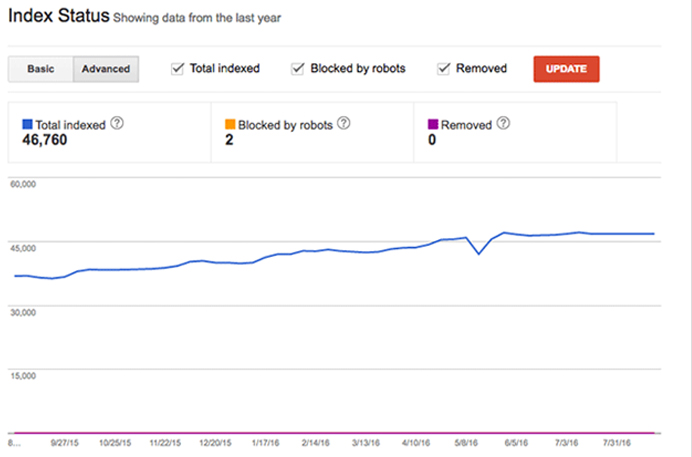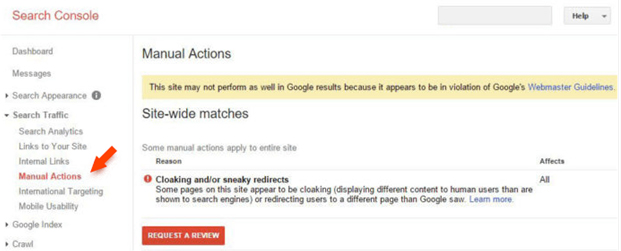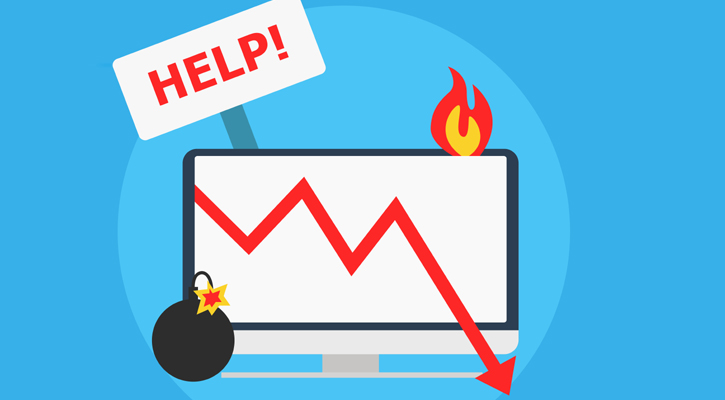What is the worst nightmare for any website owner? A major website crash maybe? Or perhaps one that just got hacked? There’s one more culprit. The worst possible feeling website owners get is when they notice a sudden drop in their search engine rankings.
SEO is a complicated process. You spend endless hours researching your keywords, indexing your web pages, and creating meaningful content. You only breathe a sigh of relief when your efforts yield results and your website starts appearing prominently in SERPs. However, reaching the top and staying on top of SERPs are two entirely different things.
What happens when you notice a sudden drop in your search engine rankings? You can either allow panic to take over or you can take a deep breath and figure out why it happened. If you notice a dramatic fall in search engine traffic, here’s what you can do to investigate the cause.
1) Check Your Website
The first thing you should do is check for technical glitches on your website. Try to visit your website from a few different devices, including smartphones and tablets. If you are getting HTTP 503 (Service Unavailable) or 404 (Not Found) errors, it’s time to reach out to your website developer. Fixing the errors will most likely improve your search engine rankings.
Get Your Indexing Right
Technical problems with your website can cause your rankings to drop only when they have persisted for a long time. If this is not the case, then it is likely that there is a problem with the indexing of your website. One way to check this is to use the Google Search Console[1] tool.
Under the Google Index section, check for Index Status. The graph will display the number of pages of your website that are indexed at present versus previous months. A sudden drop indicates that Google has stopped indexing certain pages of your website.

Get your indexing right with the help of google search console tool. Image via seroundtable.com
This could be due to an error in the robot.txt files of those particular pages. In this case, getting the files fixed should resolve the problem.
Another reason could be that you have removed many web pages at once without creating any 301 redirects. If you did the removal on purpose, then it’s time for you to create those URL redirects.
2) Manual Penalty
Once you have ruled out technical errors and indexing issues, it is time to determine if your website was penalized. Human reviewers at Google can impose a manual penalty if certain pages of your website violate Google’s guidelines[2]. Once again, you can use the Google Search Console to identify any such manual penalties.

Protect & recover your site from manual penalties. Image via link-assistant.com
If you notice such a warning in the Manual Actions section, start investigating what could have triggered the penalty.
User-Generated Spam
Examine all pages on your site that allow user-generated content (guest posts, blog posts, comments, etc.). Look for content such as advertisements and irrelevant links. Once you have removed them, make sure you block any spammers from your website. Take a look at Google’s guidelines on how to prevent user-generated spam[3].
Thin or Duplicate Content
One of the primary rules of SEO is to always upload unique and meaningful content. Whenever you violate this guideline, your website could be penalized and your search engine rankings will go down. If this is the case, then you need to identify all pages on your website that contain duplicate content. You can use tools such as Copyscape[4] for this purpose.
You should also watch out for web pages with affiliate links or auto-generated content. Once you have identified these pages, remove all duplicate and thin content from your website. Replace it with fresh and unique content.
Cloaking Redirects
A cloaking redirect means the content of your website appears differently to search engines and human users. You can use the Fetch as Google[5] tool to compare the content seen by Google and a visitor on your site. Check for any discrepancies and fix them to ensure that both human users and search engines read the same content.
Harmful Inbound Links
Another major cause of a manual penalty is when your website is flooded with toxic backlinks. This can happen due to multiple reasons. You may have hired an inexperienced person or agency that created these unhealthy inbound links. It is also possible that you have been a victim of a negative SEO attack by a competitor.
It is difficult to pinpoint the exact cause of a poor inbound link profile. You need to find a way to tell the search engines that these links are not to be associated with your website. For instance, you can check the link profile of your website using Google Search Console. Identify the problematic backlinks and disavow them using Google’s Disavow Links tool[6].
3) A Competitor on the Rise
Every time a website achieves a higher search engine rank, it’s bound to push some of its competitors’ websites down. This might be the case with your website. It is always advisable to keep a close eye competitors’ progress in terms of SEO. Anytime you notice a drop in your search engine traffic, check if you have been outranked by a competitor.
If this is the case, you can run a thorough on-page and off-page audit on your competitor’s website. This will help you identify the key areas in which you lost ground. The only way to correct this is to improve your SEO strategies[7] and outrank your competitor in the future.
4) Algorithm Updates
Whenever a search engine releases a new or majorly updated ranking algorithm, it can take a toll on your ranking. The good thing is you are probably not the only one affected by the change. Connect with the SEO community[8] on the Internet to learn about any recent changes. Dig deep and find out everything you need to do in order to compensate for the updated algorithm.
You should also watch out for the periodic refreshes of existing search engine algorithms. For instance, Google’s Penguin algorithm[9] went live in 2016. Therefore, you need to be extra careful while building inbound links. Harmful backlinks will have an immediate impact on your rankings.
5) Website Redesign or Migration
If your rankings have dropped after a major website update, it is likely that something went wrong during the process. A website update could mean a complete redesign, a platform shift, or a migration to HTTPS.
Log in to your Google Search Console and check for Crawl Errors under the Crawl section. If there is a significant spike in the error graphs after your website redesign, it calls for your attention.

Use google search console to fix crawl errors. Image via link-assistant.com
Read Next: Rank Tracking – What Is It & How To Track Search Engine Rankings
Conclusion
A fall in search engine rankings is every website owner’s worst nightmare. However, if you are ever a victim of this kind of SEO apocalypse, don’t be disheartened. Take a look at the data and statistics to identify the root cause of the drop. Then take the necessary corrective measures to improve your search engine traffic.
As a rule, run regular audits (both on-page and off-page) to identify any issues that might be plaguing your website.
Do you have any other strategies for overcoming a sudden drop in search results? Please share your thoughts in the comments section.




